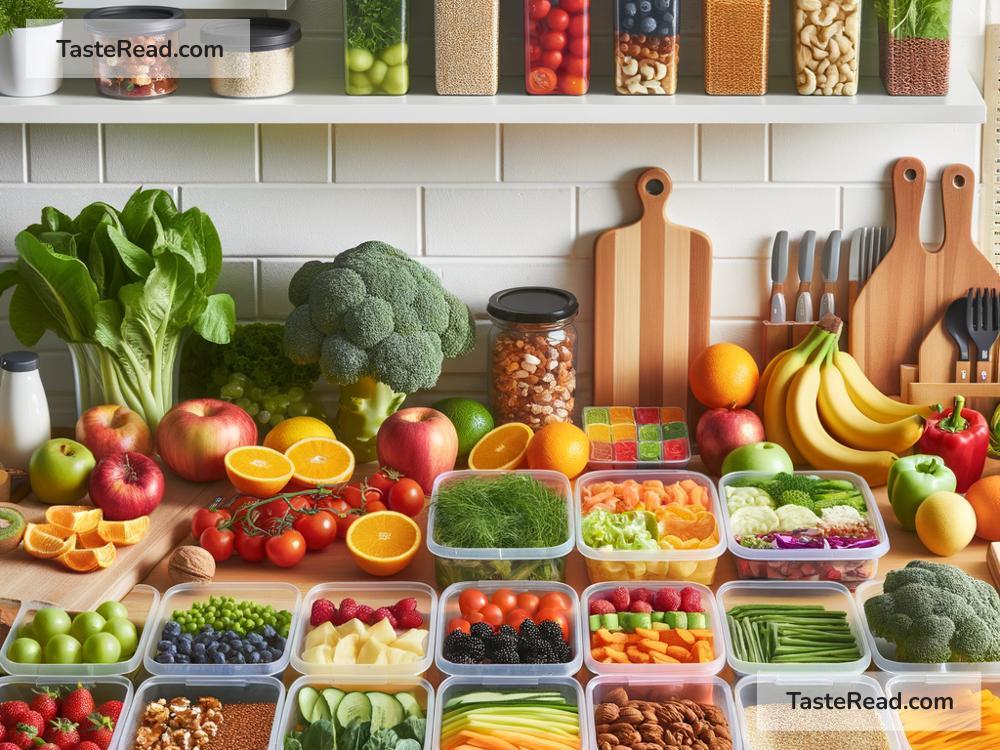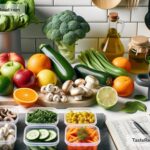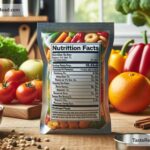How to Plan Meals for Optimal Vitamin Intake
Eating nutritious food is one of the best ways to keep your body healthy and strong. Vitamins play a vital role in helping us stay energized, fight illnesses, and feel our best every day. If you’ve ever wondered how to plan meals to get all the vitamins your body needs, you’re in luck! This simple guide will help you understand how to make smart food choices and create balanced meals for optimal vitamin intake.
Why Are Vitamins Important?
Vitamins are natural substances found in foods that help your body perform various functions. For example, vitamin C boosts your immune system, vitamin D keeps your bones strong, and vitamin A helps maintain healthy eyes and skin. There are 13 essential vitamins your body needs:
- Vitamin A
- Vitamin C
- Vitamin D
- Vitamin E
- Vitamin K
- Eight B vitamins (like B12 and folate)
Since your body can’t produce most vitamins on its own, you must get them through the foods you eat.
How to Plan Meals for Vitamins
The key to meal planning for optimal vitamin intake is variety and balance. Let’s break this down into three simple steps.
Step 1: Add Color to Your Plate
Different colored fruits and vegetables often contain different vitamins. For example:
– Red fruits like tomatoes and strawberries are high in vitamin C and antioxidants.
– Orange foods like carrots and sweet potatoes are rich in vitamin A.
– Green vegetables like spinach and broccoli are packed with vitamins K and C.
When you plan your meals, aim to include a rainbow of colors on your plate. The more colorful your plate looks, the more likely you’re getting a wide range of vitamins.
Step 2: Include Whole Foods
Whole, unprocessed foods are your best source of vitamins because they contain natural nutrients that help your body. Processed foods, like chips or sugary snacks, often lack essential vitamins. Here’s how you can include whole foods in every meal:
– Breakfast: Choose oatmeal with fresh berries instead of sugary cereal.
– Lunch: Prepare a salad with leafy greens, colorful veggies, and grilled chicken instead of fast food.
– Dinner: Enjoy a baked salmon filet with steamed broccoli and quinoa instead of fried options.
By choosing whole foods, you’re giving your body vitamins it can absorb more effectively.
Step 3: Don’t Forget Protein
Protein-rich foods often contain key B vitamins, including B12, which is essential for energy production and brain health. Some protein sources to include in your meals are:
– Lean meats like chicken and turkey
– Fish like salmon or tuna (also high in vitamin D)
– Eggs (a source of vitamins B2 and B12)
– Plant-based options like beans, lentils, and tofu
Making sure protein is part of your meal will help you cover your B vitamin needs while keeping you full and energized.
Vitamin-Rich Meal Ideas
Here are simple examples of meals packed with vitamins:
- Breakfast: Banana smoothie with yogurt, spinach, and almond milk + a boiled egg on the side.
-
Packed with vitamins A, C, B12, and potassium.
-
Lunch: Quinoa salad with kale, cherry tomatoes, avocado, and grilled chicken.
-
Rich in vitamins K, E, C, and B vitamins.
-
Dinner: Baked salmon with roasted sweet potatoes and steamed asparagus.
-
Loaded with vitamins D, A, B12, and antioxidants.
-
Snack: A handful of mixed nuts and orange slices.
- Provides vitamin E, vitamin C, and healthy fats.
Be Mindful of Cooking Methods
When meal planning, pay attention to how you cook your food. Overcooking or frying can destroy some vitamins, especially water-soluble ones like vitamin C and B vitamins. Try these healthy cooking methods to preserve vitamins:
– Steam or boil: Great for preserving vitamin C in vegetables.
– Bake or grill: Keeps your food flavorful while retaining nutrients.
– Eat raw: Many fruits and veggies are best eaten raw for maximum vitamin absorption.
Foods That Pack a Vitamin Punch
If you’re not sure what specific foods to add to your meals, stick with these vitamin-rich options:
– Citrus fruits (like oranges and lemons) for vitamin C
– Leafy greens (like spinach and kale) for vitamins K and A
– Sweet potatoes and carrots for vitamin A
– Eggs for vitamins B12 and D
– Nuts and seeds for vitamin E
– Fortified foods (like fortified cereals or plant-based milk) for vitamin D and B12
Stay Hydrated
Alongside planning meals, don’t forget to drink enough water. Staying hydrated helps your body use vitamins effectively and keeps you feeling good.
Consult a Professional
If you have specific dietary needs or health concerns, it’s always a good idea to speak with a doctor or nutritionist. They can help you create a personalized meal plan based on your health goals.
Conclusion
Meal planning for optimal vitamin intake doesn’t have to be complicated. By including a variety of colorful fruits and vegetables, protein-rich foods, and whole grains in your meals, you’ll ensure that your body gets the vitamins it needs. Keep experimenting with new recipes, focus on balance, and enjoy the process of eating nourishing foods.
Remember, the food you choose today can help build a healthier tomorrow. So, start planning your vitamin-rich meals and give your body the fuel it needs to thrive!


